The Fujisan Hongu Sengen Taisha (富士山本宮浅間大社) owns most of the mountain above the eighth station.
The shrine attained the right to pick up coins thrown into the crater as monetary offering in 1609. The Edo Shogunate donated it to the shrine in 1779. The national government claimed title to the land, but the Supreme Court recognized the land as the shrine's grounds in 1974.
"Sengen" or "Asama" shrines worshiped Mount Fuji as a deity named Asama no Okami (浅間大神). The Fujisan Hongu Sengen Taisha is the head shrine of them. Fujinomiyaguchi route begins at this shrine.
The shrine was build on land with spring water from Fuji to prevent eruptions by appeasing the wrath of the mountain in the 9th century. The primary deity of the shrine is Konohanasakuya-hime, the female deity of water. Asama no Okami came to be identified with Konohanasakuya. Fuji worshippers climbed the mountain after purifying themselves in the shrine's spring called Wakutamaike Pond(湧玉池). Even now they do it on the mountain's opening day.
main shrine of Fujisan Hongu Sengen Taisha(富士山本宮浅間大社)
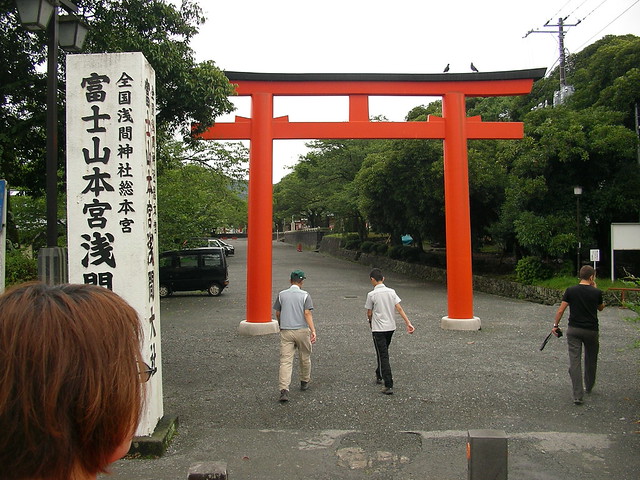 |
| 富士山御霊水 湧玉池, 富士山登山(富士宮ルート) Climbing Mt.Fuji by jetalone /flickr |
main shrine of Fujisan Hongu Sengen Taisha
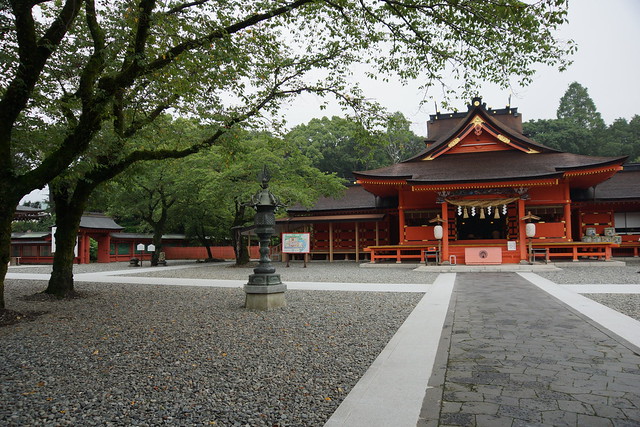 |
| DSC02859 by ume-y /flickr |
main shrine of Fujisan Hongu Sengen Taisha
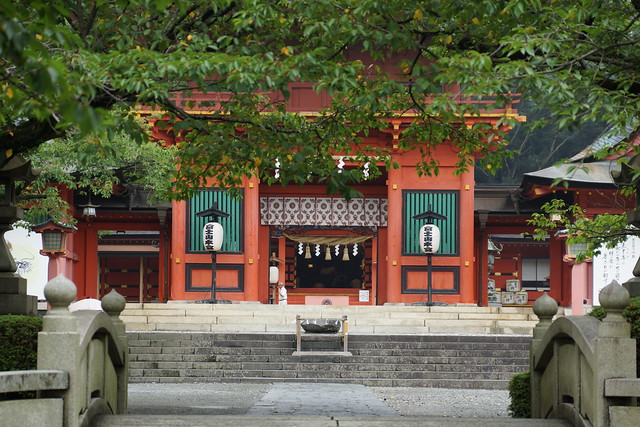 |
| DSC02845 by ume-y /flickr |
Wakutamaike Pond(湧玉池)
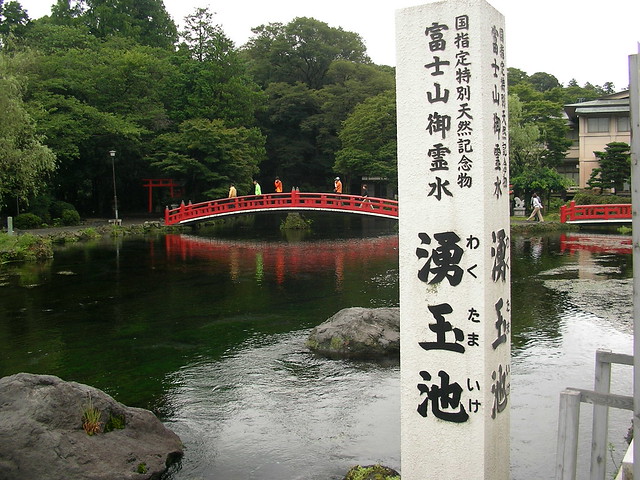 |
| 富士山御霊水 湧玉池, 富士山登山(富士宮ルート) Climbing Mt.Fuji by jetalone /flickr |
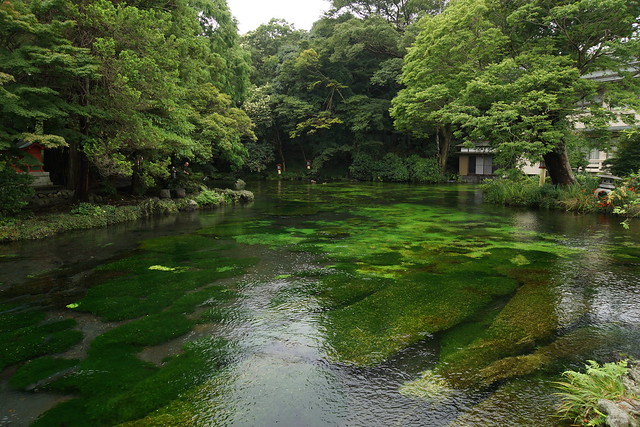 |
| 湧玉池 by ume-y /flickr |
 |
| 富士山御霊水 湧玉池, 富士山登山(富士宮ルート) Climbing Mt.Fuji by jetalone /flickr |
World Heritage site Mount Fuji includes Omiya・Murayama route(current Fujinomiya route) above the sixth station. The Omiya・Murayama route begins at the Fujisan Hongu Sengen Taisha(富士山本宮浅間大社) and runs through Murayama Sengen-jinja Shrine(村山浅間神社).
Nowadays about 24% of Fuji climbers take the Fujinomiya route(Fujinomiyaguchi climbing trail) in Shizuoka Prefecture.
Fujinomiya route
 |
| 下山, 富士山登山(富士宮ルート) Climbing Mt.Fuji by jetalone /flickr |
 |
| 最後の鳥居, 富士山登山(富士宮ルート) Climbing Mt.Fuji by jetalone /flickr |
Fujinomiya route
 |
| 富士山登山(富士宮ルート) Climbing Mt.Fuji by jetalone /flickr |
Fujinomiya route, 9.5 station(九号五勺)
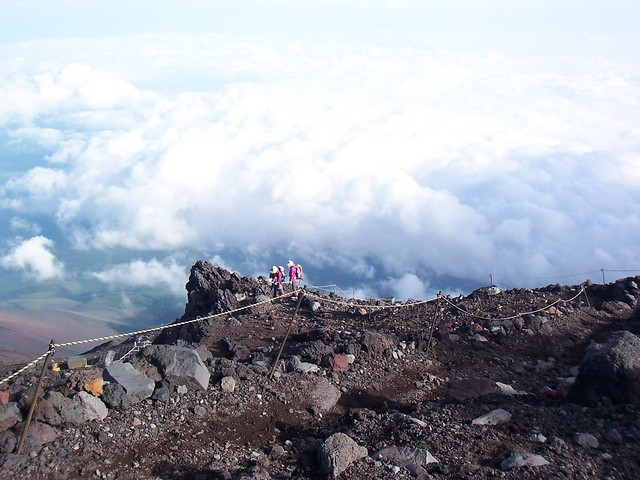 |
| 九号五勺へ, 富士山登山(富士宮ルート) Climbing Mt.Fuji by jetalone /flickr |
Okumiya (奥宮, interior shrine) of the Fujisan Hongu Sengen Taisha(富士山本宮浅間大社) is located on the summit of Mt. Fuji.
Okumiya
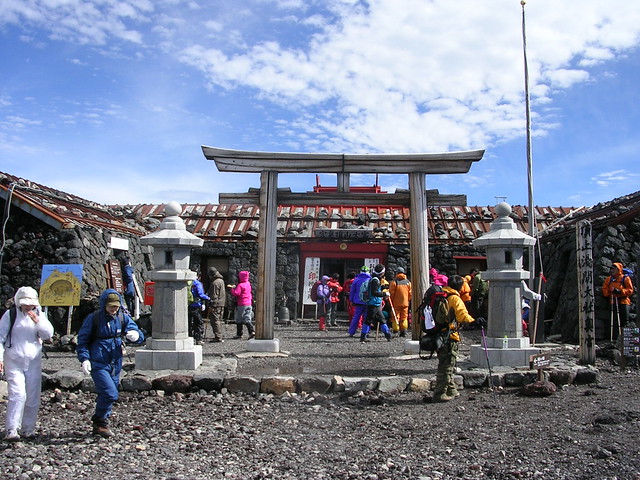 |
| On Mt.Fuji by tataquax /flickr |
Okumiya
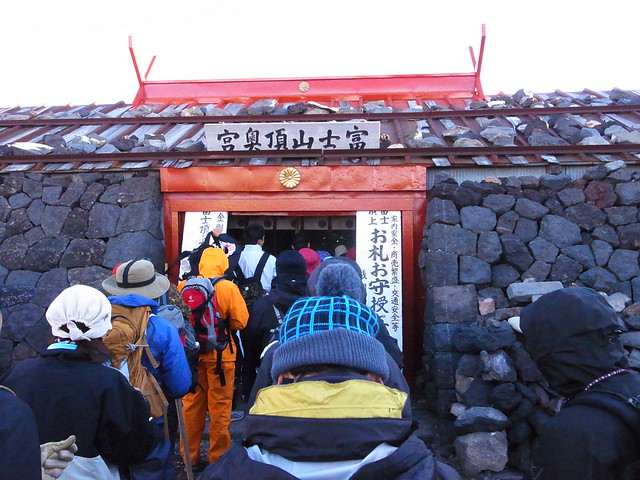 |
| 浅間大社 富士山頂奥宮, 富士山登山(吉田ルート) Climb Mt.Fuji(Yoshida Trail) by jetalone /flickr |
These amulets are available at the okumiya.
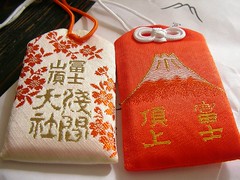 |
| 富士山頂浅間大社のお守り Mt.Fuji Souvenir (Omamori) by jetalone /flickr |
In the Edo Period, a mountain with three peaks represented Mt. Fuji.
 |
| 富士山登山(富士宮ルート) Climbing Mt.Fuji by jetalone /flickr (paper bag containing amulets) |
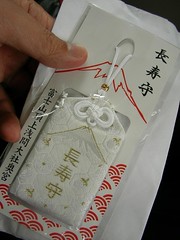 |
| 長寿守(富士山頂上浅間大社奥宮), 富士山登山(富士宮ルート) Climbing Mt.Fuji by jetalone /flickr (longevity amulet) |
Yamamiya Sengen-jinja Shrine(山宮浅間神社) in Fujinomiya City, Shizuoka Prefecture
According to legend, the Yamamiya Sengen-jinja Shrine(山宮浅間神社) is the predecessor of the Fujisan Hongu Sengen Taisha. The Yamamiya Sengen-jinja Shrine does not have its main shrine. Visitors worship within sight of Fuji at the shrine. It is thought to be an older form of the Mount Fuji worship.
Murayama Sengen-jinja Shrine(村山浅間神社) in Fujinomiya City, Shizuoka Prefecture
Monks such as Matsudai(1103-?) started to go through hard training in the mountains. An ancient document says that he built a temple on the summit in 1149. Matsudai is thought to be the founder of Shugendo on Mt. Fuji. Shugendo religion combines the Japan's ancient mountain-worship (one of Shinto sects) and Japanese Buddhism, and it mixes some of Taoism and Onmyodo elements.
Murayama Sengen-jinja Shrine(村山浅間神社) was a major base for Mt. Fuji Shugendo. The shrine flourished under the aegis of the Imagawa clan, but the clan's destruction in 1569 led to the decline of the shugendo. At the same time, the Buddhistic element in Mt. Fuji worship disappeared.
No comments:
Post a Comment